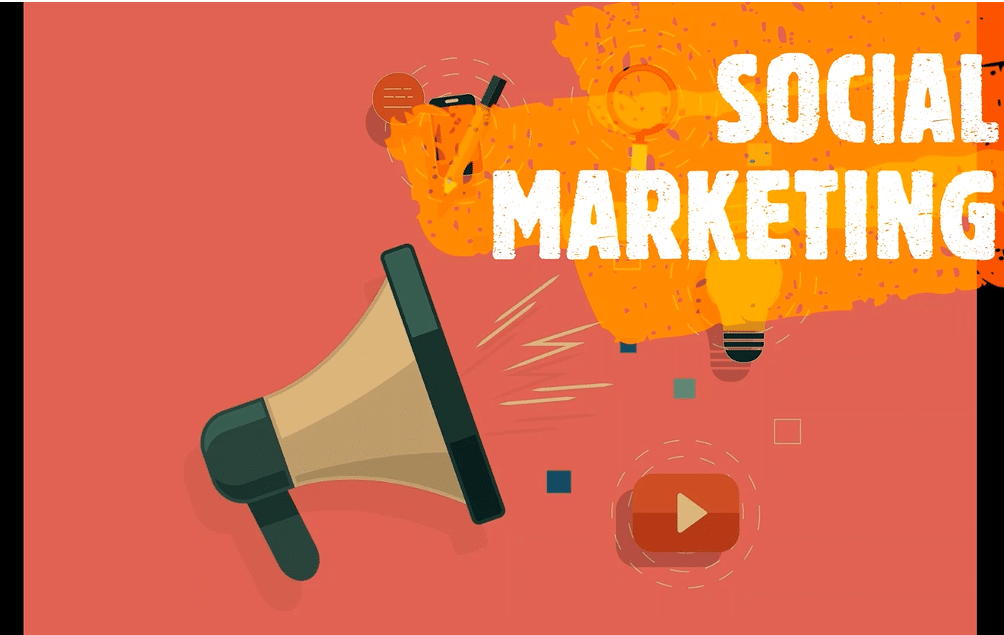Social marketing is a tool for influencing behavior that improves individuals and society for good. It uses the technique of commercial marketing campaigns to draw awareness to a cause, convincing individuals to change their actions towards that cause. In other words, social marketing helps to create sustainable change through social campaigns.
Although non-profit and governmental organizations run the majority of social marketing campaigns, commercial businesses are not left out. They promote causes in their communities, for which they’re passionate. As we proceed, you’ll find out why social marketing is vital, and the strategies organizations employ in creating social good.
It’s, however, important to state that the idea behind social marketing isn’t to promote a commercial brand, a product, or a service. Instead, it suggests a sustainable lifestyle for societal benefit. First, let’s consider the benefits of social marketing.
Benefits of Social Marketing
Social marketing is a great asset that offers numerous benefits, some of which include:
- Eradication of social vices like corruption and drunk driving, affecting society and quality of life
- Encourages the consumption of socially desirable products.
- It promotes green initiatives and environmental causes like anti-littering, endangered species awareness, and anti-deforestation campaigns.
- Helps individuals adopt a healthier lifestyle, such as exercising and quitting smoking.
- Assists people to avoid potentially undesirable behavior. For instance, campaigns that highlight the consequences of drug abuse to prevent individuals from engaging in them.
- It is a cost-effective way of promoting sustainable change.
- Encourages individuals to learn new skills
- It supports social activism such as anti-bullying, gender equality, and racial equality.
- It promotes the awareness of a modern lifestyle such as the concept of family planning in a particular community.
Features of Social Marketing
Although social marketing uses commercial marketing techniques to advance a social cause, its principles, characteristics, and features are distinct from other forms of marketing. To clarify the idea behind social marketing, the National Social Marketing Center in the United Kingdom developed eight crucial elements.
These features, built from Alan Andreasen’s six-point criteria, include:
#1. Behavior
Social marketing’s objective is to influence the practices of the target audience and not merely to bring awareness or knowledge. Firstly, the focus is to understand their current behavior and develop strategies to shape a new behavioral pattern. Then, you can divide the steps towards achieving this goal into different phases and stages over time.
#2. Orientation
Market orientation means understanding the beliefs, attitudes, values, needs, and knowledge of the target audience. It’s a conscious effort to find out about people’s lives from their perspective and not based on our ideas.
#3. Theory
It’s the use of behavioral approaches to learn human behavior and to develop interventions around this study.
#4. Insight
Insight is an essential aspect of customer analysis. It’s a call to gain awareness of what motivates the people and then develop actions to inform their change in behaviors.
#5. Exchange
Influencing behaviors involves the concept of exchange- giving up something to gain something more beneficial. It’s vital to understand how the target audience perceives rewards and benefits. Then, develop strategies to incentivize the desired behavior.
#6. Competition
This concept focuses on understanding the factors that compete for people’s time, attention, and tendency to act in a particular way.
#7. Segmentation
It splits the target audience into segments based on similar characteristics, to achieve an effective campaign. For instance, in a campaign targeting moms, one group may comprise stay-at-home moms while another comprises working moms. These segments help to streamline the interventions accordingly.
Read Also: 6 Types of Market Segmentation (+benefits & example)
#9. Methods Mix
Social marketing involves using the 4Ps of marketing- product, price, promotion, and place- to achieve a behavioral goal.
-
Product
The product in any form of marketing is what you’re selling. In social marketing, this product is the behavioral or social change you want to influence and its benefits. Furthermore, the product may be tangible like a vaccine, or non-tangible, such as the stop of female genital mutilation.
-
Price
In social marketing, the amount may be monetary or non-monetary (emotional, psychological, or time-related). It defines the cost the target audience will pay in adopting a change. It’s vital first to minimize the price of the intended behavior. Lastly, increase the value of the existing practice to make the change desirable.
For instance, in a social marketing campaign to promote healthy eating habits, the price may be for the audience to give up their favorite snacks. Minimize this price first, by teaching moderation rather than total abstinence. Also, amplify the benefits of healthy eating. In comparison, maximize the cost of unhealthy eating habits to increase the campaign’s success.
-
Place
It refers to the location where you can reach the audience and where the desired change will be most productive. A campaign to drive a food bank, for example, can take place at a grocery store, with donation bins at the exits.
-
Promotion
What methods and channels are you employing to notify your audience and draw attention to the desired change? It can be through social media, radio, television or billboard adverts, or one-on-one activities. The campaign should reinforce every detail about the product and its benefits to attract a response in a creative way.
Read Also: Concept of Marketing Environment (+ successful case studies)
Importance of Social Marketing
Social marketing uses the same tools that traditional marketing employs to sell products, to sell healthy behavior. Think about the effect a commercial advert can produce, for instance. Not all ads may catch your attention or make you develop an interest in a product or service. However, a creative ad can speak to your emotions and make you check out what a brand is offering.
Creative social marketing campaigns have a similar effect. How? People are generally not impressed when you tell them what to do via news or public service announcements. Some may ‘deliberately” break a traffic rule, in defiance, after listening to the news instructing them otherwise. Others may find it difficult to break long-standing habits like smoking.
Also, some individuals may never understand the severity of a problem via a PSA. For those who understand, they may find it challenging to adopt a new habit, or they may think that their actions alone will not count.
However, with a well-designed social marketing campaign, organizations can capture the attention of a large group of people. These campaigns can appeal to an audience’s emotions and transform their perception of a social cause. In summary, it’s an effective strategy that offers a simple and more compelling way to make people accept change.
The importance of social marketing is also visible in the drive for charitable donations. Several people want to make a difference in kids’ charity and campaigns for special needs people. Social marketing can help to drive these worthy causes in a super creative way.
Types of Social Marketing
There are two types of social marketing: operational and strategic social marketing.
#1. Operational Social Marketing
Organizations can choose to undertake social marketing operationally to change existing behavior. It’s a planned process, and it involves different stages from scoping to follow-up, to achieve specific goals.
#2. Strategic Social Marketing
It involves the formulation of new policies and development strategies to inform an audience and enhance their behavior. In other words, organizations can apply strategic social marketing to assist in creating and implementing new policies.
Social Marketing Examples
Let’s look at some notable SM examples from different organizations in the past.
#1. Save Paper, Save The Planet
The World Wildlife Fund (WWF) for Nature organized the Save Paper, Save The Planet campaign to reduce paper use, especially paper towels. The campaign featured a paper towel dispenser with South America’s image, which represents the Amazon rainforest.
When an individual takes more paper towels from the dispenser, South America’s image turns from green to black, indicating the effect of paper usage on the forest. As people read the message in public restrooms, they were more inclined to reduce their use of paper and go for alternatives to save the earth.
#2. Missing Type Campaign
In 2014, the #missingtype campaign helped NHS Blood and Transplant raise awareness of the importance of blood donations. Before the campaign, there was a rapid decline in blood supply to blood banks. Therefore, the objective was to rekindle donors’ interest and save future blood supply.
The strategy involved the omission of some letters of the alphabet to capture people’s attention. NHS Blood and Transplant were able to attract its target audience- between the ages of 17 and 25 -and mainstream media. For instance, Daily Mirror ran its papers with letters A and O (the most sought-after blood type) missing from some headlines.
Additionally, the campaign reached over 2 billion people in the UK, with new donors accounting for 47% of the total blood donations.
#3. Dumb Ways to Die
The most famous example of a social marketing campaign in 2012 was probably Metro Trains’ Dumb Ways to Die Campaign in Australia. The aim was to convince people to stay safe around trains. It featured a catchy song and animated characters showing different ways to die, with unsafe train behaviors being the dumbest.
The campaign went viral, with over 190 million views currently. While it was supposed to be a paid advert, it generated free media coverage worth $60 million. Months following the campaign, Metro Trains was able to report a 21% decrease in train-related accidents.
Social Marketing Strategy
Generally, a social marketing strategy helps reach a target audience through cost-effective interventions that will impact them over time. If you’re trying to use social marketing to solve a problem, your strategy should evoke emotions and motivate actions to bring about change.
First, you should be sure about your objectives and the type of response you’re expecting from the audience. Be sure to define the 4Ps of the campaign before launching it clearly. Secondly, consider crafting a catchy and thought-provoking slogan such as “We can do it” or “plastic bag kills.”
Thirdly, incorporate compelling visuals capable of illustrating the problem and triggering a response. You may want to create a symbol to tie in with your campaign, such as the pink ribbon for breast cancer awareness. In conclusion, tailor your strategies such that your social marketing campaign spreads the right message and receives the intended response.
What Is the Purpose of Social Marketing?
A marketing strategy known as “social marketing” aims to change behavior with the “common good” as its main objective. It applies commercial marketing principles to social topics by using their constituent parts.
What Is Social Media Marketing Also Known As?
Social marketing, also referred to as “marketing for good,” is a tactic that encourages positive societal change by emphasizing changing people’s behaviors or lifestyles rather than just promoting the purchase of goods or services.
What Are Social Marketing’s Advantages?
Social media marketing gives businesses a competitive edge. Customers favor purchasing goods from companies that are morally and socially accountable. As campaigns and concerns over social and environmental issues expand, it is anticipated that these trends will gain appeal.
What Does a SWOT Analysis of Social Media Initiatives Include?
A framework for assessing and identifying the key issues affecting your business while taking into account its opportunities, threats, weaknesses, and strengths is a social media SWOT analysis.
FAQs On Social Marketing
How is social marketing used?
SM today employs commercial marketing tactics to encourage the adoption and maintenance of healthy habits, such as analyzing target audiences, determining the goals of targeted behavior modifications, personalizing communications, and modifying branding strategies.
What are the different stages of social media marketing?
This procedure is divided into five stages, each of which includes a variety of activities: 1) Planning; 2) Message and materials creation; 3) Pretesting; 4) Implementation; and 5) Evaluation and feedback.







